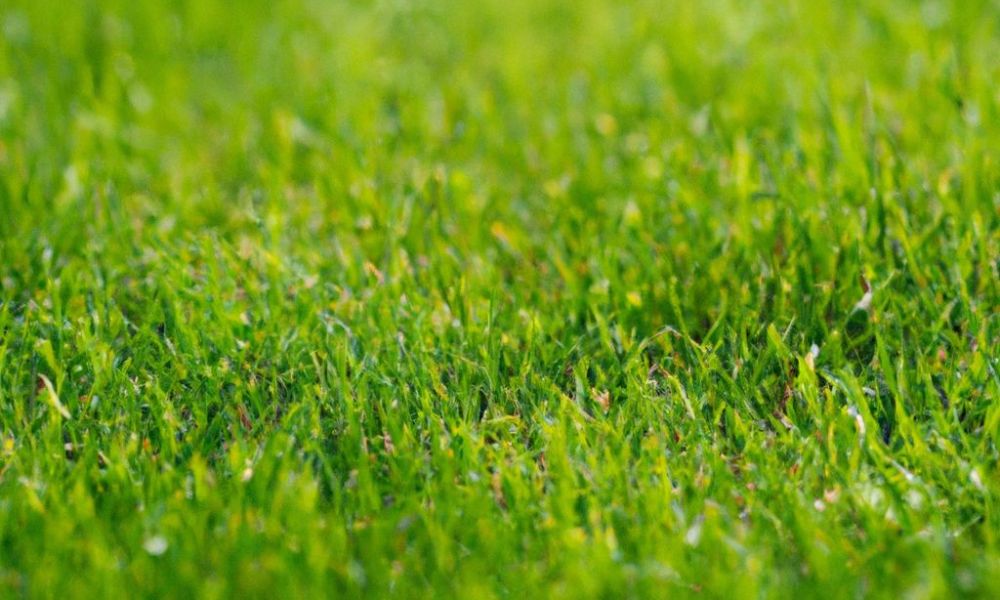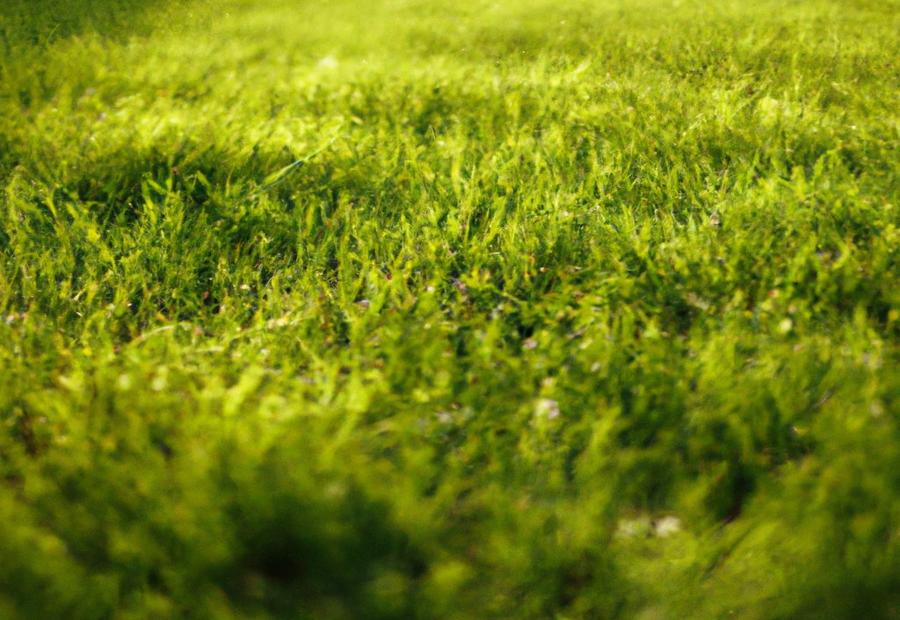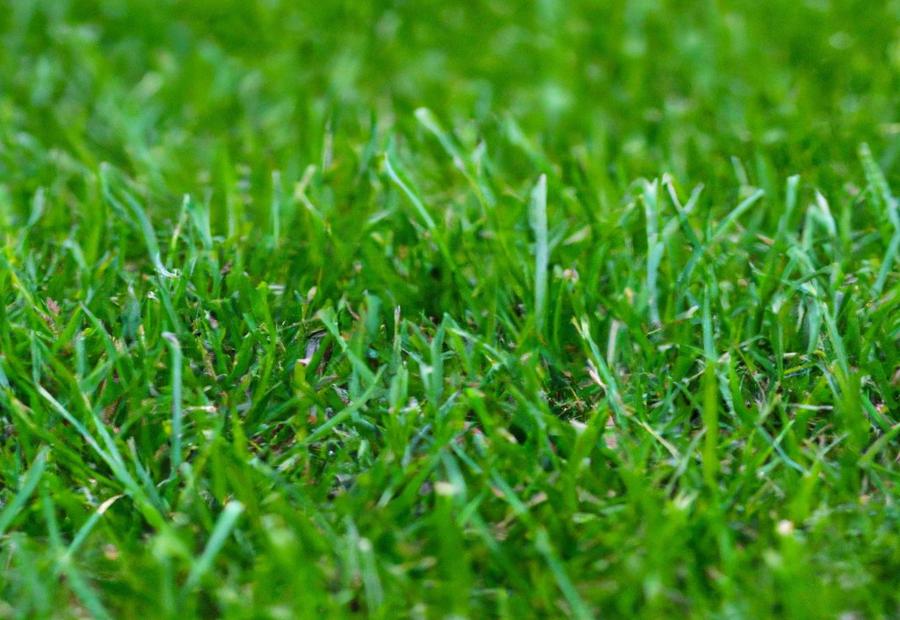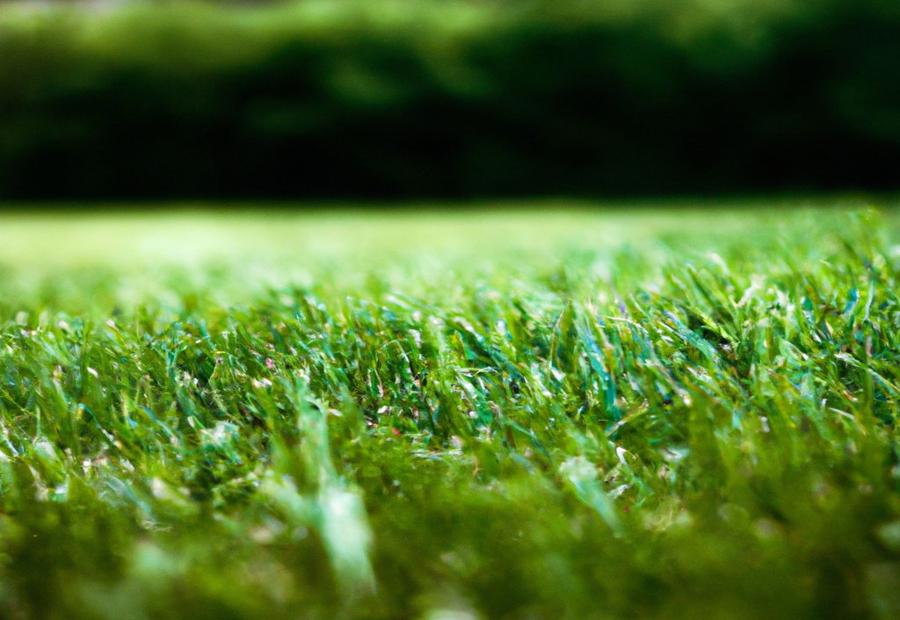GardenerHeaven.com is reader-supported. When you buy through links on our site, we may earn an affiliate commission.

Properly timing your lawn care activities is essential for a healthy and lush lawn. In this section, we will delve into the importance of fertilizing and explore the timing guidelines for mowing after fertilizing. Discovering the optimal wait time after fertilizing before mowing can make a significant difference in the effectiveness of fertilization and the overall health of your lawn. So, let’s dive in and uncover the best practices to achieve a vibrant and well-maintained lawn.
Importance of Fertilizing

Photo Credits: Gardenerheaven.Com by Bruce Thomas
Fertilizer is essential for a beautiful lawn. It provides the grass with nutrients like nitrogen, phosphorus, and potassium that are needed for growth. It also helps to improve soil quality by replenishing nutrients. This gives the grass the best chance of health and vitality.
Fertilizer helps the lawn withstand drought and other tough conditions too. It also stops weeds from growing by promoting dense grass growth. It even repairs any damage caused by foot traffic or pests.
Timing is important when fertilizing. It must be done at the right time so the grass can absorb the nutrients. When it comes to mowing after fertilizing, consider the weather, type of fertilizer used, grass species, and growth rate. Generally, it’s recommended to wait 24-48 hours before mowing after applying granular fertilizer, so it has time to dissolve and reach the roots.
Timing Guidelines for Mowing After Fertilizing
To get the best out of your lawn, you need to time your mowing after fertilizing properly. Factors like the type of fertilizer, absorption rate, and weather conditions affect timing. Granular fertilizers take longer to absorb than liquid fertilizers, and hot, dry weather slows down absorption. To ensure optimal lawn health, wait 24-48 hours after fertilizing before mowing.
Mowing too soon can cause problems. Uneven fertilizer distribution, and nutrients being removed before they can benefit the grass. Plus, if you don’t use a sharp blade, it can tear or shred the grass instead of cutting it cleanly. This can lead to stress on the grass and slow its recovery.
Monitor your lawn’s health regularly after fertilizing. Look out for signs of over-fertilization or nutrient deficiencies, like excessive growth, discoloration, or weak turf. Adjust your fertilizing schedule accordingly.
Stick to the timing guidelines for mowing after fertilizing, and use a sharp blade. That way, your lawn will stay vibrant and lush all season. Don’t let your lawn become the scene of a grassy ‘murder mystery’!
Factors Affecting Time Required
Mowing after fertilizing requires taking various considerations into account. Weather conditions, type of fertilizer, and grass health are some of the factors that affect how long you should wait. Let’s look at them in more detail.
- Weather Conditions: Temperature, humidity, and rainfall can influence how quickly the fertilizer is absorbed by the grass. It’s best to wait until the fertilizer is fully absorbed and any extra moisture has evaporated before mowing.
- Type of Fertilizer: Granular fertilizers release nutrients slowly, so mowing should be delayed. Liquid fertilizers are absorbed quicker, so mowing can be done sooner.
- Grass Health: If the lawn is healthy, it will utilize nutrients faster and recovery from cutting will be faster. If the lawn is not in good shape, it may take longer.
Consulting a lawn care expert or following instructions from the fertilizer manufacturer can help determine how long to wait before mowing. That way, you can have a healthy lawn.
Ideal Timeframe
To determine the best time for mowing after fertilizing, one must consider various factors. These include the kind of fertilizer used, weather conditions, and lawn health. Granular fertilizers may take longer than liquid ones to be absorbed. It’s important to wait until the fertilizer is in the soil and taken up by the grass roots before mowing. That way, the nutrients get spread across the lawn without getting wasted during mowing.
Generally, one should wait 24-48 hours after applying granular fertilizer before mowing. This gives time for the fertilizer particles to break down and mix with the soil. Liquid fertilizers are usually quicker to absorb and don’t need as much time. But, refer to the product instructions for specific recommendations.
Moreover, monitor your lawn’s health. If you see any signs of stress or discoloration after fertilizing, it’s best to wait a few extra days before mowing. This gives your grass more time to recover and prevents any potential damage from mowing.
By understanding these factors and following the guidelines, you can ensure that your lawn gets maximum benefit from fertilization and stays healthy and vibrant. The exact timeframe for mowing after fertilizing depends on the situation, but being aware of these considerations will help you create an effective routine. Remember, mow with caution after fertilizing or your grass will be screaming ‘I’ve been violated!’
Tips for Mowing After Fertilizing

Photo Credits: Gardenerheaven.Com by Joshua Campbell
When it comes to mowing after fertilizing your lawn, following the right tips and timing guidelines is crucial. In this section, we will explore effective mowing strategies and the importance of mowing before fertilization. Additionally, we’ll discuss the significance of using a sharp blade and monitoring your lawn’s health. With these insights, you’ll have the knowledge to achieve a vibrant and well-maintained lawn.
Mowing Strategies
Achieve a well-maintained lawn with effective mowing strategies. These help maintain health and vibrancy by promoting proper growth and preventing weed infestation.
- Regularly mow to control grass height and get an even cut. Mow often, especially during periods of active growth. Adjust mower height to the type of grass and its growth stage.
- Vary mowing patterns to prevent soil compaction and promote uniform growth. Change directions each time you mow.
- Decide between mulching and bagging. Mulching leaves clippings to decompose and provide nutrients. Bagging collects clippings for disposal.
- Avoid mowing wet grass. Uneven cuts and clumps can suffocate healthy grass underneath.
- Keep mower blades sharp and free from debris. This ensures clean cuts and prevents tearing or fraying of grass blades.
Follow these strategies for a luscious green lawn that looks great. Adhere to these guidelines for a well-manicured lawn. Fertilize, and then your lawn is ready for mowing!
After Fertilization
- Mow the grass first! Sharp blades will give a healthier, more precise cut.
- Monitor the lawn after fertilization, looking for growth and changes.
- Use different types of fertilizer, like granular or liquid, depending on your needs.
- Tip: Ask an expert for how long to wait before mowing after fertilizing – instructions and advice can help you get the best results!
Grass Should Be Mowed First
Mowing the grass before fertilizing is key for a lush lawn. Remove any excess height or debris by mowing first. This allows the fertilizer to reach all areas of your lawn. It’s recommended to mow a day or two before you apply fertilizer. This helps the grass recover and limits stress.
Set your mower to the right height for your grass type. Uniform growth is promoted by evenly mowing across the lawn. Make sure your mower blades are clean and sharp. This prevents tearing or damaging the grass, which stops nutrients from being absorbed.
Monitor your lawn’s health. See if color, thickness, and vitality have changed. You may need to adjust mowing frequency or timing after fertilizing.
One homeowner shared their experience. Before researching, they would quickly start mowing again after applying fertilizer. After learning the importance of mowing before fertilizing, they noticed improvements in their lawn’s color and texture. Plus, their lawn had increased resistance against drought.
In summary: Mowing before fertilizing is vital. It’s like giving a nice, clean shave with a sharp blade. This promotes uniformity in growth and allows better fertilizer distribution and absorption. Monitor your lawn and adjust mowing frequency or timing after fertilizing.
Sharp Blade
A sharp blade is a must for keeping a groomed lawn after fertilizing.
- A sharp blade yields a neat cut, which helps grass to flourish.
- A sharp blade slices, not tears, grass. This reduces chances of damage and diseases.
- Sharp blades put less stress on grass. This allows it to recover fast post mowing.
To keep the blade sharp, it needs regular sharpening or replacing. This ensures mowing is safe and effortless. With a dull blade, the grass could get torn. This can cause diseases and slow healing. A sharp blade also makes mowing more efficient and successful.
To keep the lawn healthy, inspect it often for signs of stress or deficiencies. Address problems quickly, and provide appropriate care. This includes fertilizing and other maintenance like watering and aerating. Taking these steps will help keep your lawn vibrant and healthy during the season.
Monitoring Lawn Health
Monitoring the health of your lawn is essential for keeping it vibrant and healthy. Inspect it regularly for yellow or discolored patches, thinning areas, or signs of pest infestation. Step in quickly with the right treatments to restore its vitality before damage spreads.
Measure the pH and nutrient content of your soil for insight into the right balance of essential elements for your lawn. Track your observations and test results over time to identify any patterns or changes in the health of your lawn. This will help you adjust your maintenance practices as needed.
Understanding Different Types of Fertilizers

Photo Credits: Gardenerheaven.Com by Thomas Young
When it comes to achieving a lush and vibrant lawn, understanding the different types of fertilizers is key. In this section, we’ll explore the various options available, from granular fertilizers to liquid fertilizers. Each type has its own unique benefits and application methods. So, let’s dive in and discover which fertilizer might be the best fit for your lawn care routine.
Types Of Fertilizers
When it comes to lawn care, fertilizers are essential! Two main types – granular and liquid – exist. Granular is solid with small pellets or particles that are spread across the lawn with a spreader. It slowly releases nutrients over time. Liquid fertilizer is in liquid form and can be sprayed onto the grass. It is fast-acting and absorbed quickly by roots.
Factors such as nutrient needs, soil conditions, and application preferences should be taken into consideration when choosing. Granular is preferred for slow release and long-term feeding. Liquid is good for quick nourishment and immediate results.
Specialized fertilizers are also available, such as weed control or promoting growth. They provide targeted benefits for specific lawn care needs. To select the most appropriate option, homeowners must understand the types of fertilizers and apply them correctly. This will encourage healthy growth and a luscious green lawn all year round. Granular fertilizer is like tasty sprinkles for the lawn!
Granular Fertilizer
Granular Fertilizers: For long-lasting nourishment of your lawn.
- These granules are easy to use and provide consistent nutrient distribution.
- They release nutrients over a longer period than liquid fertilizers.
- You can customize the granules to meet the needs of different types of grass.
When using granular fertilizer, remember to:
- Mow your lawn first so the fertilizer can reach roots effectively.
- Use a sharp mower blade to prevent damage.
Keep an eye out for signs of over-fertilization or nutrient deficiencies after application. Adjust fertilization schedule or make amendments to address these issues, for a vibrant, healthy lawn.
Liquid Fertilizer
Liquid fertilizer comes in liquid form. It is used to supply plants with nutrients and help them grow healthier. People usually apply it with sprayers or irrigation systems.
This table shows the different kinds of liquid fertilizers:
| Type | Description |
|---|---|
| Nitrogen | Has lots of nitrogen for leaf and stem growth |
| Phosphorus | Contains phosphorus for root development and flowering |
| Potassium | Has potassium for plant health and disease resistance |
| Micronutrients | Has iron, zinc, and manganese for plant nutrition |
Liquid fertilizer has benefits. It is absorbed fast by plants. You can also change it easily with dilution or mixture.
It is also good for targeted applications. You can give nutrients to certain plants or areas. This stops wastage and optimizes nutrient usage.
To use liquid fertilizer correctly, you need to follow the manufacturer’s instructions. Also, check if any changes need to be made in the fertilizer regularly.
In summary, liquid fertilizers are great for supplying plants with nutrients. They are quick to absorb and you can use them in a targeted way. This is why they are popular with gardeners and farmers.
Conclusion

Photo Credits: Gardenerheaven.Com by Benjamin Johnson
Fertilizing the lawn is a must for it to stay healthy and look good. Afterward, it’s key to wait before mowing, so the fertilizer can absorb into the soil and help the grass. The waiting time usually changes based on the fertilizer used and the weather. Experts recommend waiting at least 48 hours before mowing.
This time gives the grass a chance to take in the nutrients from the fertilizer, which encourages it to grow well. Mowing too soon after fertilizing can take away the nutrients from the blades, reducing the effects of fertilization.
Sometimes, the waiting time has to be adjusted depending on the fertilizer’s instructions. Some fertilizers need a longer wait, while others may be okay to mow faster than 48 hours. To be sure, it’s best to check the product label or instructions.
John recently fertilized his lawn and was eager to mow it. But, he remembered that he had to wait. He waited 48 hours, so the fertilizer could work its magic. When John finally mowed his lawn, it was lush and beautiful, greatly helped by the fertilization process. John learned the importance of waiting after fertilizing and was rewarded with a great lawn.
It’s vital to wait the recommended time after fertilizing for the lawn to stay healthy and look good. Patience and following the instructions will ensure the grass gets the nutrients it needs and experiences the best effects from the fertilizer.
##Facts about “How Long to Wait After Fertilizing Lawn to Mow: Best Practices and Timing Guidelines”:
Some Facts About How Long to Wait After Fertilizing Lawn to Mow: Best Practices and Timing Guidelines:
- ✅ The general rule of thumb is to wait 24 hours before mowing after fertilizing your lawn. (Source: Team Research)
- ✅ Factors such as the type of fertilizer used, the season, and the presence of weeds can affect the waiting time. (Source: Team Research)
- ✅ Mowing first and then fertilizing can help enhance the grass’s growth potential. (Source: Team Research)
- ✅ Most lawn grasses do not react well to cutting more than one-third of the blade’s length in a single mowing session. (Source: Team Research)
- ✅ Leaving the grass clippings on the lawn after mowing and fertilizing can provide additional organic nutrients. (Source: Team Research)
FAQs about How Long To Wait After Fertilizing Lawn To Mow: Best Practices And Timing Guidelines
How long should I wait to mow my lawn after fertilizing?
Answer: The general rule of thumb is to wait 24 hours before mowing your lawn after fertilizing. However, the waiting time can vary depending on factors such as the type of fertilizer used and the season.
What happens if I mow my lawn too soon after fertilizing?
Answer: Mowing your lawn too soon after fertilizing can result in the loss of freshly added nutrients and potentially harm the grass. It’s important to wait for the recommended duration to avoid damaging your lawn.
Can I mow my lawn first and then fertilize it?
Answer: Yes, mowing your lawn before fertilizing can help enhance the grass’s growth potential. It allows for better absorption of nutrients and ensures that the fertilizer reaches the soil effectively.
How often should I mow my lawn during the growing season?
Answer: It is recommended to mow your lawn at least once a week during the growing season. This constant care helps keep the grass at an optimal height, promotes a healthy and lush appearance, and prevents weed growth.
Should I leave the grass clippings on the lawn after mowing and fertilizing?
Answer: Yes, leaving the grass clippings on the lawn after mowing and fertilizing can provide additional organic nutrients. These clippings decompose and release valuable nutrients back into the soil, promoting the health of your lawn.
How do I determine the specific needs of my lawn and how often to fertilize?
Answer: Getting a soil sample can help determine the specific needs of your lawn and how often you should fertilize. A soil test provides valuable information about the nutrient levels in your soil, allowing you to tailor your fertilization schedule accordingly.




